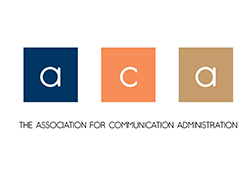Abstract
This article looks at the career opportunities for communication arts and sciences graduates in the U.S. As graduate students planning academic careers seek counsel for their programs of study, there is a need for good answers regarding career opportunities. Departments planning curricula and seeking to fill position vacancies likewise require reliable information regarding the directions in which their disciplines are moving. The analysis for curricula development, program growth, and career choices requires more than anecdotal evidence. Incidental conversations at conventions and the occasional reviews of the "state of the art" are helpful, but not adequate for considering concerns as important as academic hiring. Frameworks for assessing employment trends in higher education have been offered by Matyas and Martin (1998) and others. Specific to the communication discipline, Andersen (1997) discussed trends in graduate education and their implications for hiring. In an attempt to provide further evidence for systematic assessment of hiring choices made by higher education communication programs, the present study follows the lead of Ross and Emmert (1987) and others. It also examines the current job market in the Communication Arts and Sciences, as indicated by positions listed in the "Classified Ads" of Spectra, the newsletter of the National Communication Association. Although there are other media for position announcements, Spectra remains the principle means for job soliciting in the Communication Arts and Sciences.
Recommended Citation
Smilowitz, M. E., & Emmert, P. (2000). Employment trends in communication arts and sciences. Journal of the Association for Communication Administration, 29(1), 163–175.


